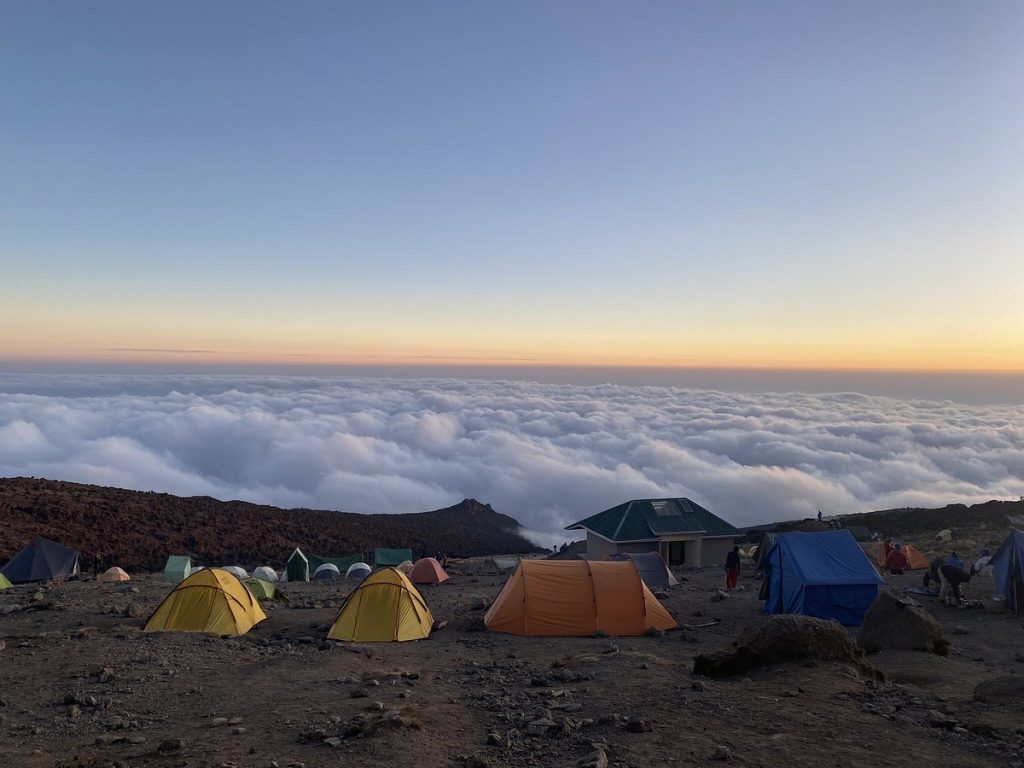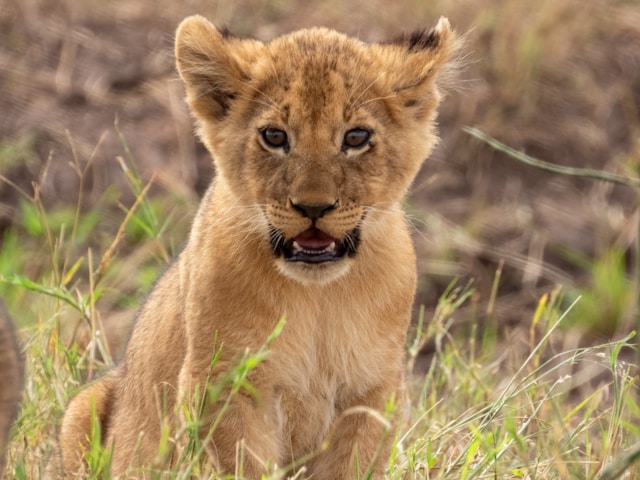Tanzania’s interior is a hazy area, but it offers something for everyone: mountains covered in forest, untamed wildlife, wetlands, flowing rivers, unique civilizations, and artwork produced in the distant past. The bustling town of Morogoro, nestled in the shade of the wet Uluguru Mountains, is the first stop from Dar. Its rich nature and the equally dynamic Luguru culture are ideal reasons to stay, especially because Morogoro has one of Tanzania’s best cultural tourism programs. The Udzungwa Mountains, like Uluguru, are fantastic for hikers and are a part of the historic Eastern Arc mountain range.
While in Tanzania, you can notice some of the tribes listed below, as well as other individuals from various tribes, all of whom will greet you with a smile and be welcoming;
The Rangi Tribe
The Rangi (also known as Langi), the largest tribe in Kondoa and the Iringi Hills, are a very kind and inviting people. You will always be greeted with wide smiles, enthusiastic handshakes, and happy children running amok as you pass by. It is preferable to strike a human than his cattle, a statement from the Rangi people, who are now predominantly farmers, that you should be aware of while you’re driving. The Rangi, who had previously lived on the plains, fled up into the hills a few centuries ago to escape the warlike Maasai’s relentless assault. They placed their settlements into broad natural hollows, making them virtually undetectable from the surrounding grassland.
Now that they have no need to hide, Rangi communities are well known for their use of brickwork, which is occasionally adorned with geometric relief designs reminiscent of those seen in some regions of Ethiopia and the Sahara. The Rangi’s gorgeous black cooking pots, which can be purchased for a few hundred shillings at any of the area’s marketplaces, beautifully display their talent in earthenware.
The Makua Tribe
The Makua arrived in the area of Masasi most likely in the sixteenth century, along with their neighbors the Makonde and Yao, from what is now northern Mozambique. They gave their new residence the name Machashi in reference to the huge and densely packed head of the local wild millet plant. In the eighteenth and nineteenth centuries, Masasi-the first properly productive land encountered by westward-bound caravans-became a crucial stopping point for slavers. They picked up not only victuals but also many of the inhabitants, who were dispersed throughout the world; among their descendants is a community of over 200,000 Makua in Madagascar.
The Maasai Tribe
Since the explorer Joseph Thomson released his best-selling book Through Maasai land in 1885, the Maasai have received an excessive amount of attention since, in the eyes of the general public, they are the quintessential African people, along with South Africa’s Zulu. The Maasai were viewed as ideal “noble savages” in those days, but their history is far more nuanced.
In the seventeenth century, their combined domain in Kenya and Tanzania was said to exceed 200,000 square kilometers. But this just tells part of the tale. Their current land, which is less than one-fourth of what it was before the arrival of the Europeans, tells the story of the other. The Maasai have been reduced to increasingly limited pieces of land. In recent decades, land expropriations have continued, this time to create the wildlife preserves of Serengeti, Tarangire, Mkomazi, and part of Ngorongoro, to which the Serengeti Maasai were relocated when they were forced out of their homes. The British took much of it away to be used as farms and ranches for settlers.
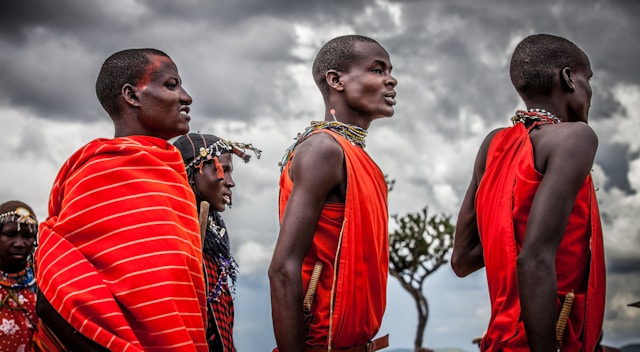
The Sukuma Tribe
The Sukuma, Tanzania’s biggest tribe with six million members, inhabits the southern and eastern hinterland of the lake, which is dotted with spectacularly worn granite rocks. The first sign that central Africa is close by is their long-horned Ankole cattle, which are starkly distinct from the short-horned Maasai type. The arrangement, which is constant, calls for simultaneous performances by two rival dance organizations, with the audience free to wander between the two; the better the medicine, the larger the audience. Undoubtedly, success depends on careful planning, and nothing is more crucial than good luck remedies (samba). This is given by the healer (nfumu) of each dance organization and is meant to make the dancers, especially the dance leader (mlingi), attractive to the audience.
Each year, new and inventive dance routines, gimmicks, and costumes are seen because the key to success is having a large audience. In 1995, one group won by employing a plastic toy monkey that had been donated to them by a Japanese traveler. While many dancers exhibited the most extraordinary gymnastic agility, some employed articulated wooden figures as accessories, stilts, or fire breathing.
The Bugobugobo snake dance, a highly dramatic performance including real pythons that is a specialty of the Ngika Society, is one of the perennial favorites despite the fact that dance steps and lyrics vary every year.
The Kuria Tribe
As the road descends into the Mara River valley, which rises north of Kenya’s renowned Maasai Mara Game Reserve, the environment gets hillier and more picturesque as one travels north from Musoma. The Masura Swamp, which is a vast area of papyrus beds through which the river meanders, fills a large portion of this valley. Tarime, the Kuria tribe’s primary market town, may be found here. The Kuria tribe, which shares a border with Kenya, may have been among the first Bantu-speaking peoples to arrive in East Africa more than two thousand years ago.
Larger and more dominant tribes, like the Luo on the lakeshore and the Maasai on the plains, have pushed the Kuria to relocate to the hill area immediately east of Lake Victoria where they are now confined and compelled to adopt a settled, agricultural way of life. Nevertheless, cattle continue to play a significant role in rituals, particularly in marriage negotiations when large dowries that are paid for by cattle continue to be the standard. Rainfall is often favorable, enabling the development of profitable crops such as maize, sugar cane, coffee, and tobacco.
Marijuana (bangi), another cash crop, is consumed communally by elders when discussing tribal concerns, serving the same function as locally manufactured beer elsewhere.
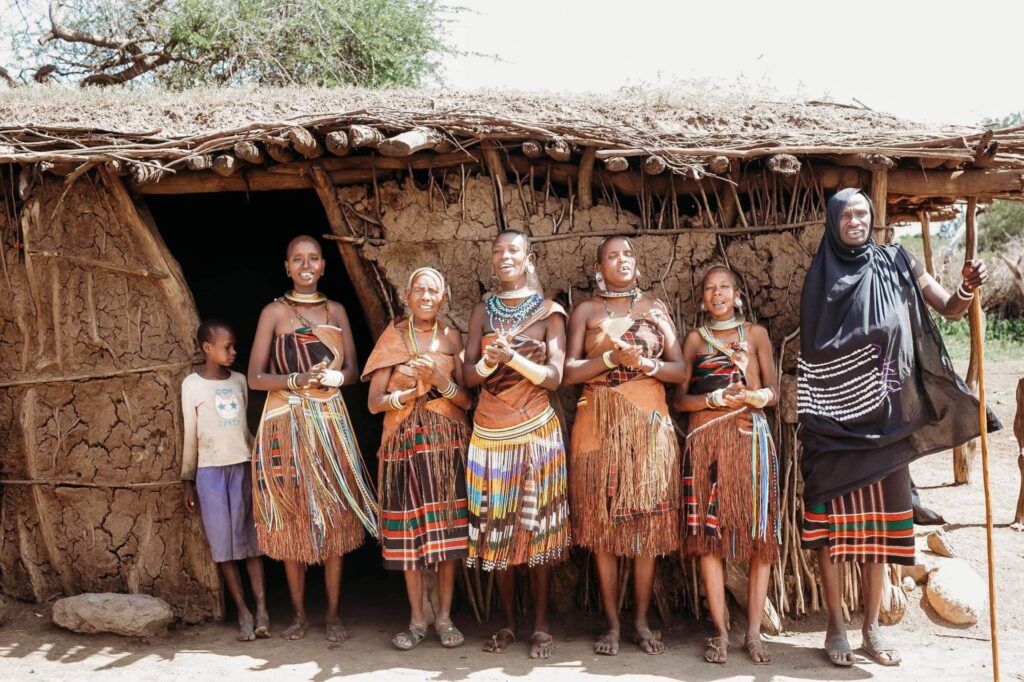
The Haya Tribe
Around two million people call themselves Haya in Tanzania’s Kagera Region, which is where they are officially known as Bahaya. They have a complicated past that is similar to that of Burundi and Rwanda, luckily without the tragedy of its neighbors. The Iru and the Hima are two different ethnic groups that make up the Haya. The region’s original occupants were Bantu-speaking farmers and fishermen who excelled in making steel; today’s Iru clan is made up of the descendants of those people, known as the Haya.
Excavations have uncovered 1500-year-old forges that could create steel of a better grade than that made in Europe in the seventeenth century while consuming less fuel. But in the fifteenth or sixteenth century, aristocratic northern immigrants known as the Hima formed the kingdoms for which Haya subsequently gained fame. The Hima feudal kingdoms effectively subjugated the Iru by imposing a rigorously hierarchical social structure on them, much like the Tutsi had ruled the Hutu in neighboring Burundi and Rwanda.
The Hadzabe tribe
Lake Eyasi, another of the Rift Valley’s soda lakes, is located in a small depression beneath Mount Oldeani in Ngorongoro. The Hadzabe tribe resides in the arid forest that surrounds it. The Hadzabe are Tanzania’s last hunter-gatherers, numbering between 500 and 2500, depending on how “pure” you count. Until the Sandawe in the south were compelled to settle forty years ago, both groups shared this status. Unfortunately, the Hadzabe seem to be going in the same direction; much of their land has been taken over by ranches and commercial plantations, which also effectively block the seasonal wildlife migrations that are essential to the Hadzabe way of life’s hunting component. Meanwhile, unwelcome outside attention, particularly from tourists, is quickly destroying their culture.
According to a news article from 2000, the Hadzabe were getting ready to leave their home and way of life behind for Arusha’s brave new world. Sadly, even though the tale turned out to be a hoax at the time, it may become a reality over the next five to ten years. The best thing you can do is support the preservation of their culture, short of persuading the Tanzanian government to safeguard Hadzabe land and its wildlife pathways. This entails leaving them alone in the absence of any form of tourism that directly benefits and is managed by them.
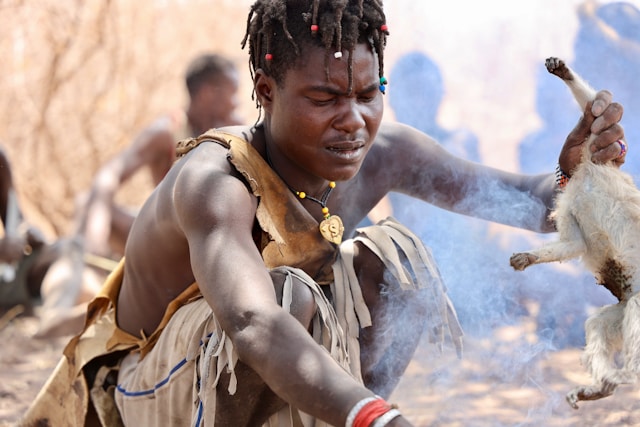
The Iraqw Tribe
The agrarian Iraqw and the cattle-herding Barbaig make up Karatu’s two largest tribes. Although the belief that the 200,000-strong Iraqw originally originated from Mesopotamia (Iraq, no less) is oversimplified given their name, it is intriguing to learn about their history. They inhabit much of the region between Karatu and Mbulu town in the south. However, the Iraqw language is related to the “southern Cushitic” tongues spoken in northern Kenya and Ethiopia, indicating that at some point in their history, they may have moved south along the Rift Valley. This is also indicated by the Iraqw people’s facial features, which are finer than those of their neighbors and resemble those of Ethiopians.
Strange parallels are drawn between the wrecked irrigation systems, terraces, and cattle pens of Engaruka, at the foot of the Great Rift Valley’s escarpment, and the agricultural practices of the Iraqw. These practices include complex irrigation methods, crop rotation, advanced terracing to limit soil erosion, and the use of manure from stall-fed cattle.
The Chagga Tribe
The Chagga, who number over a million and live on the southern and eastern slopes of Kilimanjaro, are among the richest and most intelligent people in East Africa. The fortunate fusion of favorable climatic circumstances and their own agricultural ability is the source of their fortune. The Chagga use a sophisticated system of intensive irrigation and continuous animal manure fertilization to exploit the exceptionally fertile volcanic soils of Kilimanjaro’s lower slopes, which are watered by year-round snow and ice melt and are capable of supporting one of Tanzania’s highest human population densities.
Although maize and bananas continue to be important staples, Arabica coffee has been the Chagga’s principal income crop since colonial times. The growing of bananas is traditionally a man’s job, as is the boiling and mixing of eleusine seed (ulezi) with mashed plantains to make a local beer (mbege), which is still used to compensate elders who mediate disputes.
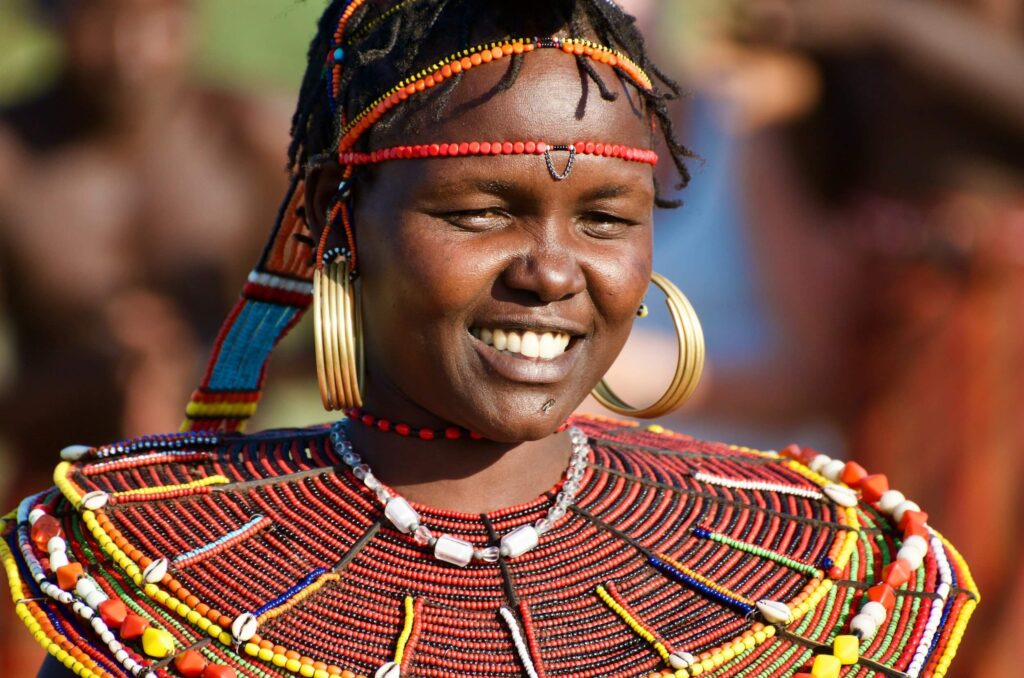
The Makonde Tribe
One of Tanzania’s largest and most diverse tribes, the Makonde, who are known across the globe for their woodcarvings, call the Makonde Plateau home. They are also one of Tanzania’s more traditional civilizations, and with good reason: for the majority of the 18th and 19th centuries, slave raids tore through southern Tanzania, but the steep-sided plateau remained largely unaffected. Similar to the tale of Adam and Eve, the history of the Makonde and the development of the woodcarving tradition are intertwined. The lone male forebear made a female figurine out of wood and put it next to his home in place of a rib.
Masks, which often appear in dances for initiation rituals and harvest festivals, are another classic style of Makonde carving. They typically symbolize spirits or ancestors. Face masks, body masks (which cover the dancer’s torso), and helmet masks (mapiko), which are worn over the head like helmets and depict a dreadful force such as traditional spirits, turbaned slave traffickers, or even Europeans, are the three principal types. Women are not allowed to enter the mpolo, a remote jungle place where the masks are created and stored.
Although the German and British colonial powers tacitly favored one tribe from another, rising tensions between the tribes were thankfully defused after Tanzanian Independence. President Nyerere’s emphasis on equality and togetherness across all tribes, and his abolition of traditional chiefdoms and kingdoms, brought an abrupt but peaceful end to the social divisions that had threatened to go the same way as tribal war. For more on tribes and cultures in Tanzania contact us for more details.

